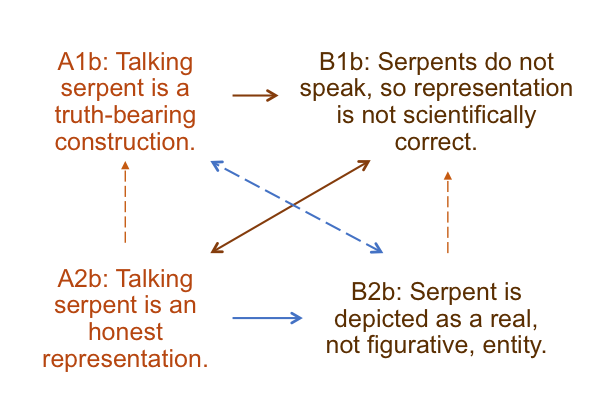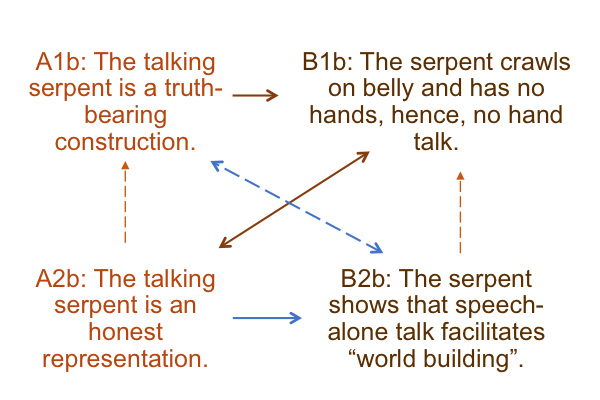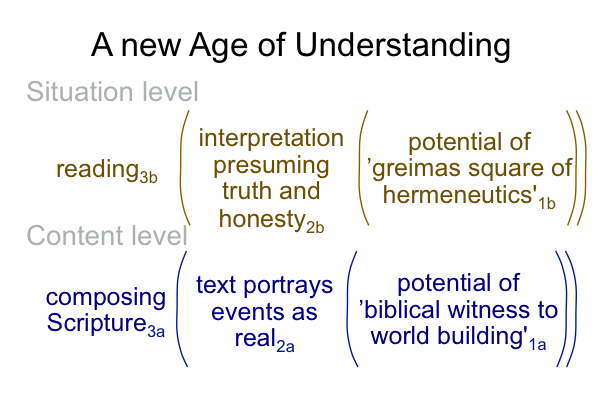Looking at Andrew Kulikovsky’s Overview (2005) “The Bible and Hermeneutics” (Part 3 of 10)
0017 The prior blog allows me to present a modified greimas square of articles nine and twelve, for the hermeneutics of biblical inerrancy.
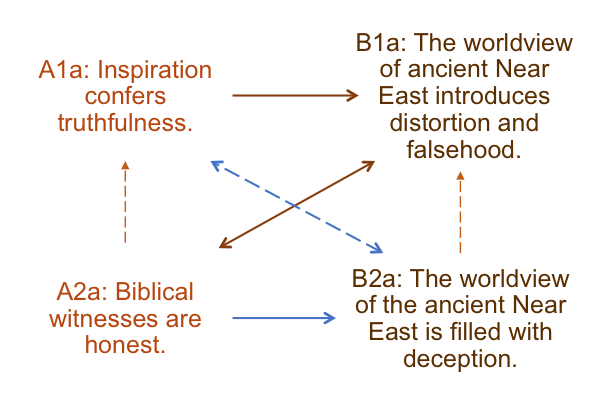
This modification contains contrasts (B1a and B2a) that do not reject their respective affirmations (A1 and A2).
0018 So, what does modern science accomplish?
Modern science tells us that the worldviews of the ancient Near East are deceptive (B2a) and incorrect (B1a).
For example, one Sumerian origin myth goes like this.
In the beginning, the god of the waters above co-mingles with the god of the waters below. Later, the latter gives birth to the air god, who then separates the two parents. Similarly, the dome above the air is solid, just like the dome under our feet. Clearly, these statements are not scientific. The first is pure fiction (B2a). The second is incorrect (B1a).
Questions arise.
Is there a scientific hypothesis explaining why the origin stories of the ancient Near East are inherently flawed (hence, incorrect) (B1a)?
Is there a scientific hypothesis explaining why the origin myths of the ancient Near East veil what may be real historical events (hence, deceptive) (B2a)?
Here is another modified greimas square of articles nine and twelve, for the hermeneutics of biblical inerrancy.
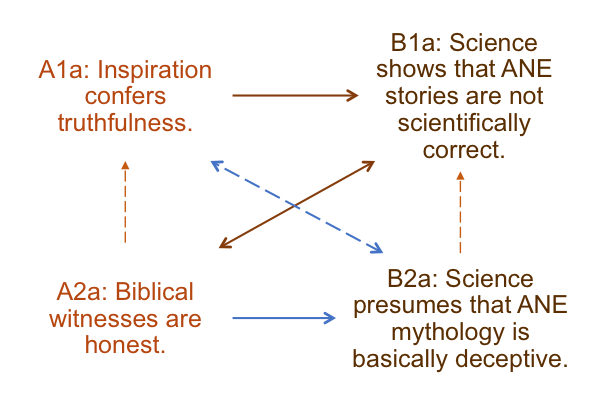
This is what science accomplishes, as of 2005 AD.
0019 What does modern science not accomplish?
Modern science has no explanation for why particular mythological (B2a) and mechanical (B1a) constructions might have occupied the civilizations of the ancient Near East.
0020 Are scientists missing an important clue, such as what all the origin stories of the ancient Near East actually say?
The origin myths of the ancient Near East portray a recent creation of humans by a differentiated (not primordial) divinity (or divinities) (B2a).
Also, as noted in the e-work, Comments on David Melvin’s Essay (2010) “Divine Mediation and the Rise of Civilization”, the origin myths of the ancient Near East depict the potentiation of civilization through gifts from the gods (B1a).
0021 All this changes starting in 2012.
A new scientific hypothesis is proposed, accounting for why our current Lebenswelt is not the same as the Lebenswelt that we evolved in.
The proposal is stated plainly The First Singularity and Its Fairy Tale Trace and dramatized in An Archaeology of the Fall, by Razie Mah, and available at smashwords and other e-book vendors.
0022 The hypothesis of the first singularity does not reject the affirmations (A1 and A2) of the Evangelical Theological Society. Plus, the hypothesis addresses questions that modern science cannot (before 2012) wrestle with.
The first singularity explains why the myths of ancient civilizations of Mesopotamia can do not envision their own ancestry, deep in evolutionary time.
The first singularity explains why the innovations of civilization seem to just appear out of nowhere, like gifts from gods.

